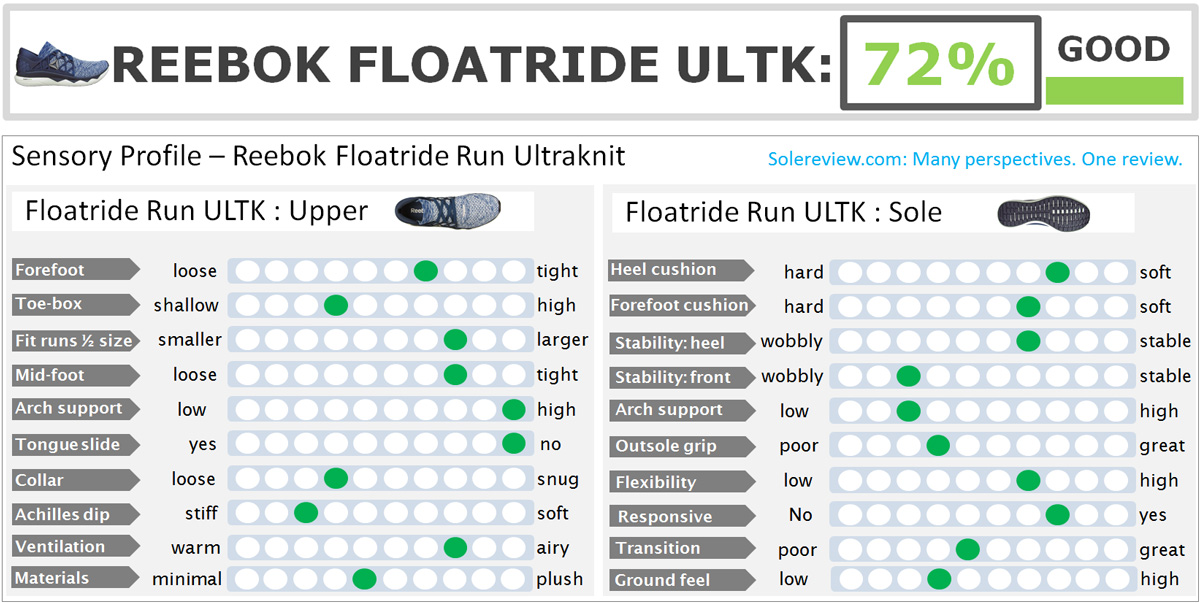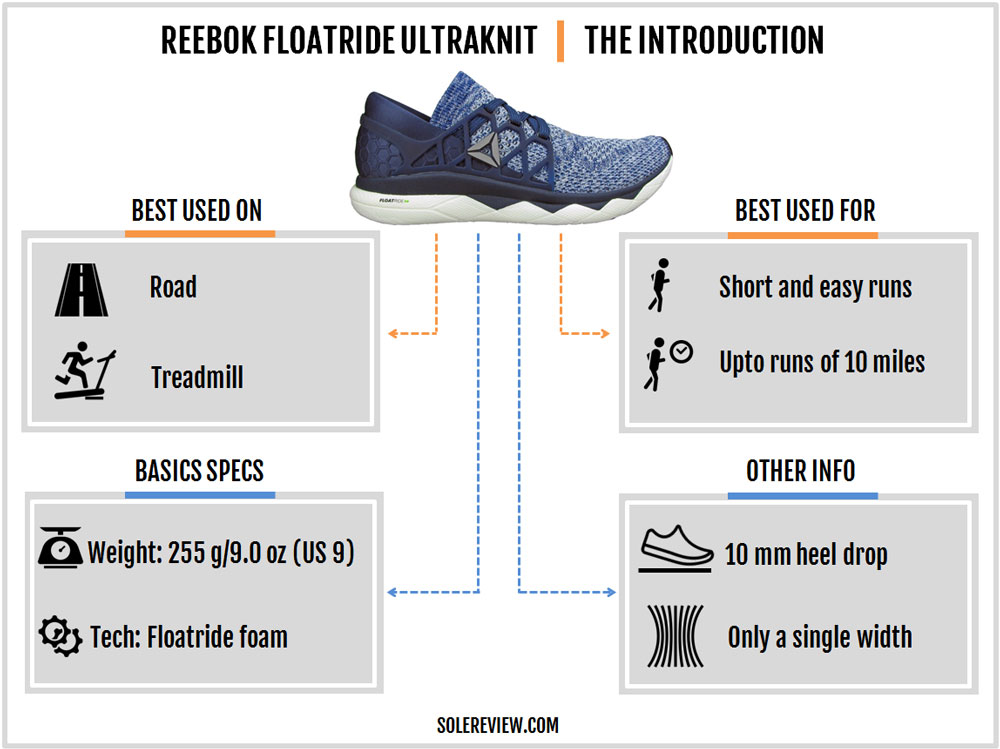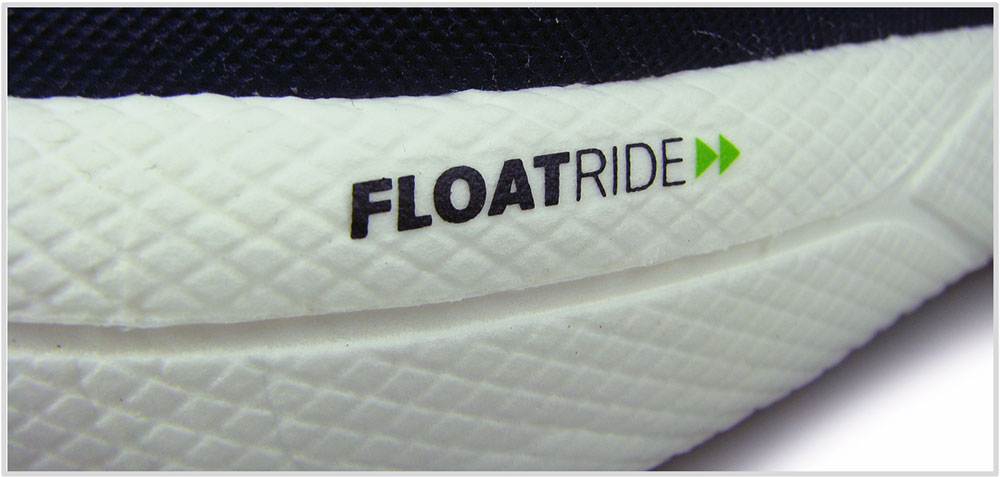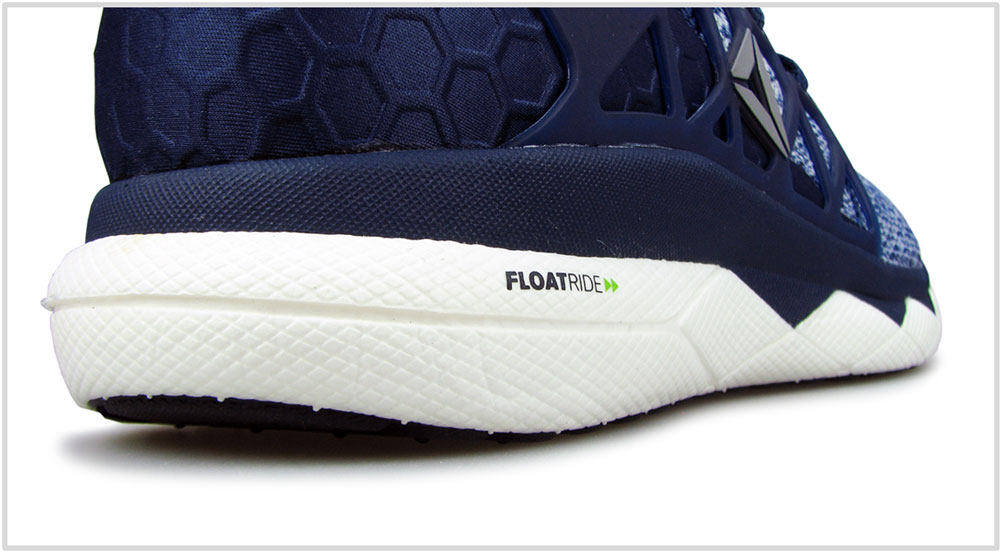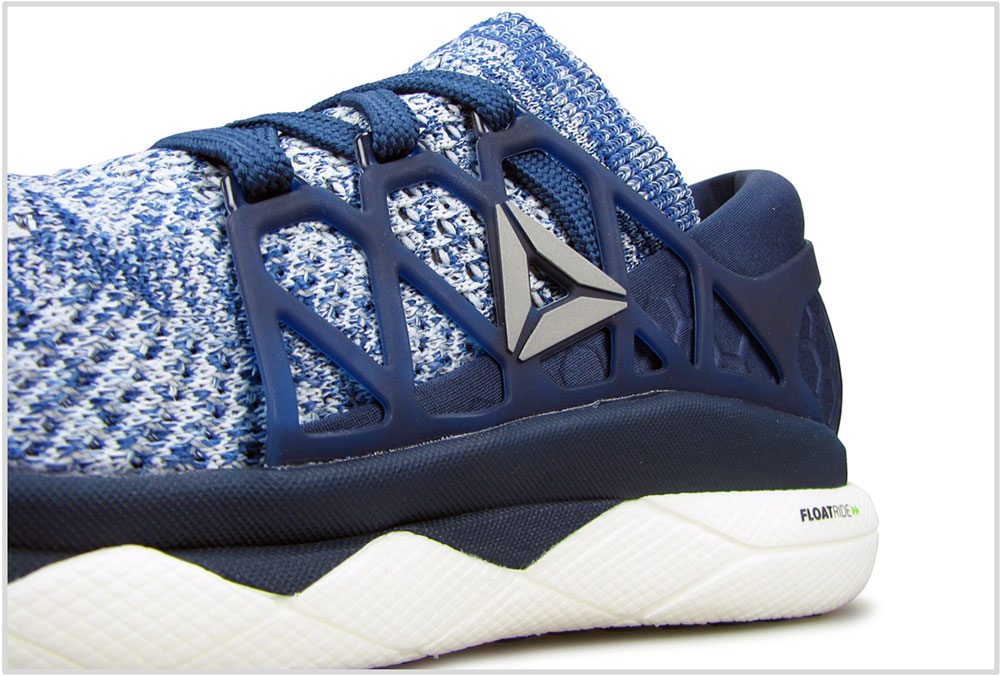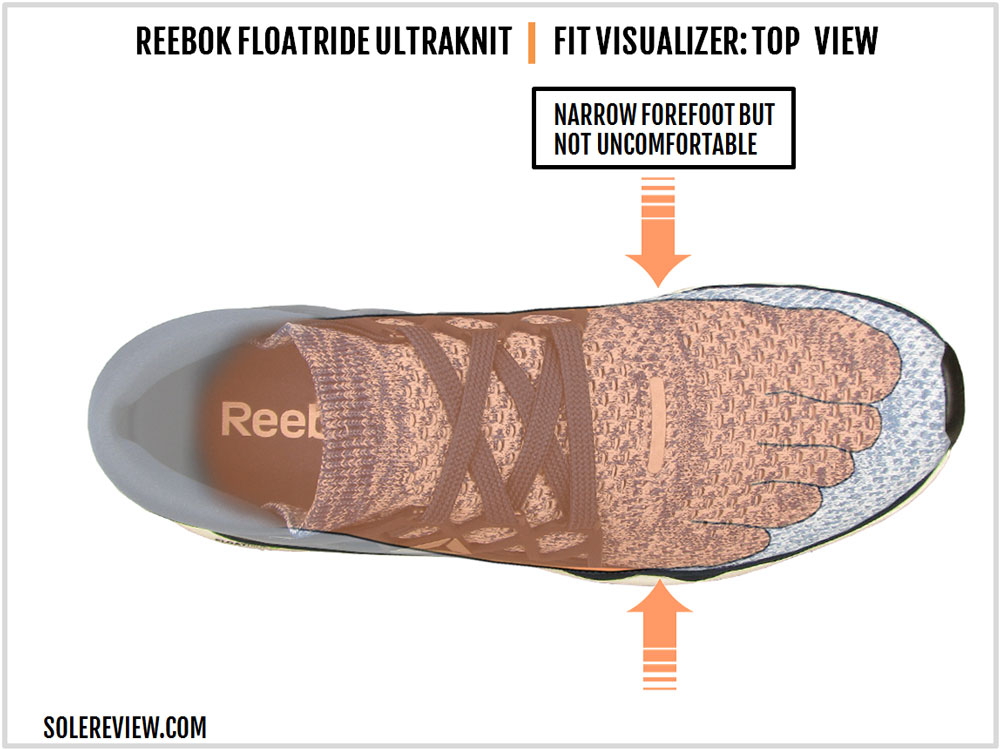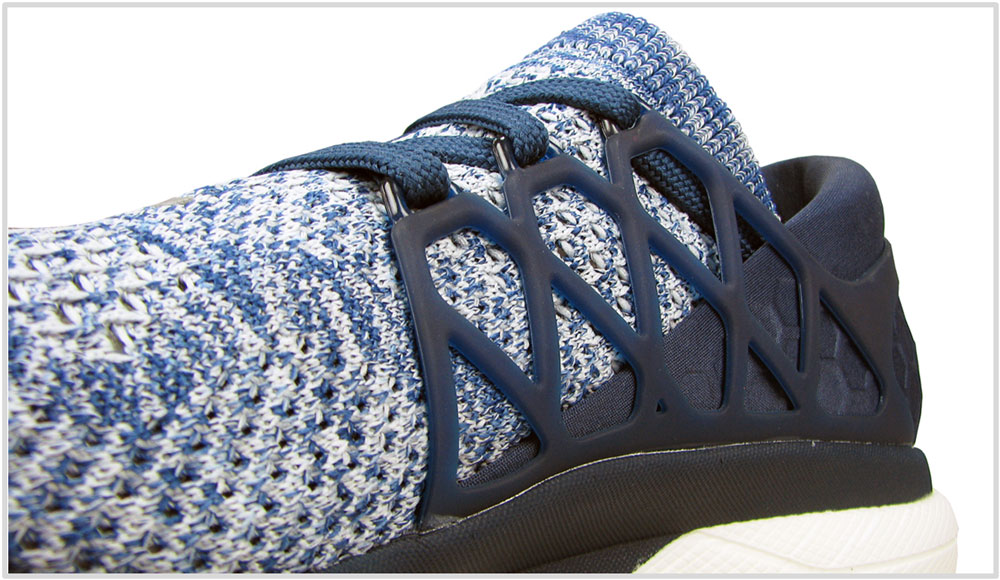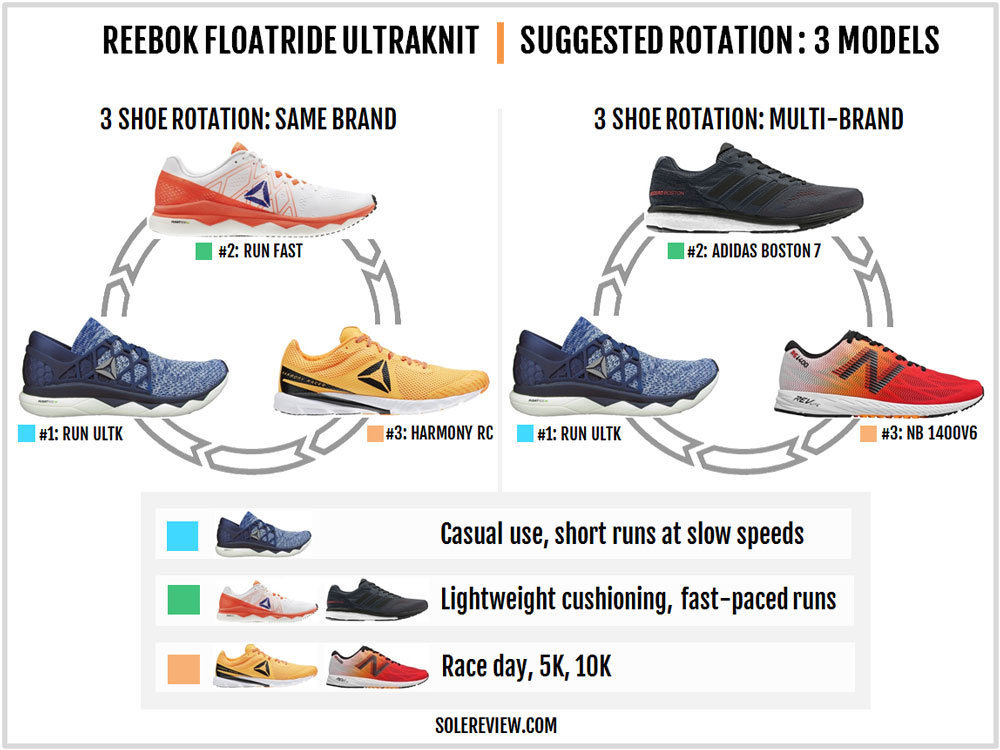INTRODUCTION
Except for a brief mention of the Harmony Racer in one of our buyer’s guides, we haven’t reviewed a Reebok shoe in a very, very long time.
It wasn’t always like this. As a matter of fact, many of our early reviews in 2008 featured Reebok running shoes. The vintage content is no longer online, but we remember cutting the Reebok Premier Bislett into half like it was yesterday. That, or admiring the seamless upper construction of the Reebok Smoothfit Hexlite.
In the 80’s and the 90’s, Reebok was a force to be reckoned with. Rather than the adidas and Nike rivalry of today, much of the focus was on Reebok vs. Nike. Remember tech like the Pump, Hexalite, Graphlite, and the DMX 10? That was all Reebok, an unstoppable juggernaut in those days.
Popular 90’s running shoe models like the Aztrec Plus and the Racer HXL had a loyal following.
The brand also had it locked down in categories other than running. Tennis was hot for Reebok when Michael Chang was on television in the Reebok Court Victory, and their performance basketball footwear (Question/Answer, Shaqnosis and the rest) were a hot commodity even before frustratingly slow dial-up connections and eBay madness were a thing.
Exactly 20 years ago, Reebok introduced the 3D Areeba and the 3D Electrolyte running shoe. These models featured a single-density, injection-molded EVA foam midsole without a rubber outsole. This template would later be copied by many other brands.
Things went downhill for Reebok after adidas bought the brand in 2005. For a while, adidas didn’t know what to do with Reebok.
Reebok’s lowest point was the brand having to pay $25 million in customer refunds for making unsupported claims about their butt-toning shoes. A course correction was made with a new directional steer towards cross-training.
Also, the beautiful and widely recognizable Reebok Vector was replaced with a bland triangular logo, reflecting the cold, clinical German approach to design. The Germans might be excellent engineers but they’re terrible at making things beautiful. Transit through any German airport, and the unwelcoming environment makes one wish that the layover was shorter.
For a while, Reebok was a rudderless boat and their in-store assortment was a disjointed mess. One did not what to make of Reebok and its strengths – if any. Was it a running shoe brand? Cross training? Lifestyle? Women’s focused?
For a better part of the last decade, Reebok seemed it was trying to do everything without being good at anything. Just four years ago, it got so bad that Reebok was rumored to be on the chopping block.
To be fair though, adidas had its own problems in the pre-Boost era. Their shoes didn’t make the best-sellers list often. The Supernova and Adistar collection(s) were nice but their clunky silhouettes did not appeal to the younger demographic.
Then came Boost in 2013, and the rest, like they say, is history. Once adidas had their own house in order, they turned their focus on putting Reebok back together. The Boost also proved to be a catalyst for a new era in midsole cushioning. Without Boost, the rest of the world would have been content with their EVA midsoles and vintage cushioning inserts.
And here we are, reviewing the Reebok Floatride Run Ultraknit. And we have to thank our readers for it. If it wasn’t for the consistent barrage of comments on our Facebook page, we wouldn’t have gone ahead and bought a pair. Ok, this isn’t the coveted Floatride Run Fast, but you’ll agree that the Ultraknit version is a good place to start.
The midsole has always been the battlefield where sneakers wars were fought and won. The last few years are a proof that. No other time in running footwear history has the market witnessed such a rapid proliferation of new midsole tech.
Be it the adidas Boost, Asics Flytefoam, Brooks DNA AMP, Nike React, ZoomX, the Puma Ignite, or the Saucony Everun, there has been something new every six months or so. Midsole foams have truly come of age, we haven’t seen the last of it – there’s a lot more where that came from.
The Floatride Run debuted in April 2017, and it quickly became apparent to runners that the new Reebok’s ride quality was very different than the rest. The midsole foam was lightweight, cushioned, responsive, and seemed to hold its structure well over time.
Given the Reebok-adidas connection, it initially seemed that Floatride was a bit Boost-like, but with greater performance upsides in certain areas. So what is the new Floatride foam made of?
Reebok makes it very clear that Floatride is made of Pebax foam. Pebax is a registered trademark of Arkema, a French chemical company, and happens to be a shortened version of PolyEther BlockAmides, or PEBA.
Arkema added the letter ‘X’ to PEBA as a play on ‘eXtreme performance,’ just to make the name sound cooler. This is true, we’re not making this up.
PEBA is a block copolymer or a thermoplastic elastomer which exists in a wide range of physical forms. It can be a stiff and rigid plate or an expanded foam. It has several advantages over standard EVA foams and even expanded TPU materials like the Boost and Everun.
Pebax foam offers the same performance benefits as EVA but at a much lower weight. This very lightweight nature gives Floatride an edge over the Boost.
Pebax also demonstrates superiority over other running shoe foams when it comes to temperature resistance. Even in extreme cold – and we’re taking minus 20° Celcius or -4° Fahrenheit here – the midsole retains its cushioning properties. The last time we froze a midsole, it ended badly for the shoe.
Reebok’s marketing might lead some to assume that Floatride is the first instance of Pebax in an athletic shoe. On the contrary, this compound has been used in the footwear industry for a very long time.
The stiff plates used in Football/soccer cleats are made of Pebax. The Mizuno Wave Plate is made of injected Pebax resin.
Even the foam isn’t new. Nearly 7 years ago, Timberland became the first brand to use Pebax foam in its LiteTrace mid mountain boot as a midsole material. In 2014, the Puma Evopower football shoe used the foam as a part of its upper.
It is also rumored that the Nike Vaporfly 4% also uses Pebax – at the very least, a version of it. That being said, we’re unsure whether the term Pebax inside the 4% refers to the hard plate, the foam, or both.
Regardless, Reebok is the first to feature integrate Pebax foam as a midsole base into a multitude of models. Apart from the Floatride Run Ultraknit, Reebok also retails the Run Fast, Run Fast Pro, the Floatride RS and the Floatride Flexweave – all of which are based on the Floatride platform.
And how does the Floatride Run Ultraknit perform?
It works as a casual shoe for everyday use or low-intensity running over shorter miles. The new midsole feels great – it’s soft, lightweight, and responsive.
The trouble starts when you mistake the Floatride Run Ultraknit for a performance running shoe. The upper has numerous shortcomings which limit the shoe’s versatility; these factors combine to make the Floatride unsuitable for high-impact or long-distance running.
Sure, the Run Fast version of the Floatride is very competent, but that’s a review for another month.
THE RIDE EXPERIENCE
The first thing which most people would probably want to know is: How does the Floatride foam compare to the adidas Boost, Brooks DNA AMP, and the Nike React?
All these foams differ in their chemical composition, so they have distinct ride signatures. Compared to the Floatride, the Boost is softer and more springy/responsive at the cost of a higher weight. The Nike React is more dense and rubbery; it feels more substantial under the foot.
The Brooks DNA AMP has a vertically-biased (up/down) kind of cushioning along with a higher firmness and weight. Given the parameters, the Nike React and the Brooks DNA AMP are better choices for heavier runners (>200 lbs or 90 kg) over the Floatride.
The Floatride foam is soft and lightweight with decent levels of responsiveness. However, when compared to the Boost, there’s a slight delay in rebound during the compression cycle. So in a way, the Floatride is similar to the Nike React in responsiveness.
Also, with Floatride, you get the sense that you’ve extracted most of its cushioning with each footstrike. It doesn’t bottom out; you just feel that the cushioning peaks during the gait cycle. It could be related to the stack height, but we’re saying it like is.
One area where the Floatride foam completely obliterates the competition is its all-weather versatility.
Its performance retention outperforms the rest in freezing temperatures; when conducted to solereview’s freeze test (we put the Floatride inside the ice-box), there was no perceptible loss in softness. Ditto for warm weather running where the Reebok did not turn marshmallowey soft.
Compare this to the React, which stiffened beyond recognition when subjected to below freezing temperatures. The adidas Boost survives the cryogenic treatment but a slight hardening of the foam occurs.
The Floatride Run Ultraknit features the PEBA-based foam in a full-length form. The upper sidewalls are made of a hard EVA foam, and this portion is attached to the knit upper.
The hard rims are restricted to the periphery and do not cover the midsole. Between the midsole and the removable insole is another layer of EVA foam.
The sockliner is very plush due to the high foam content and a top-cloth with a luxurious hand-feel. The insole has raised pod-like structures on its underside which increases the softness just under the foot. The arch flare of the insole acts as a barrier between the plastic cage and the foot.
The outsole is a single sheet of lugged and latticed rubber. The rubber is a regular kind, medium-soft with decent levels of grip. The traction and durability aren’t as good as the adidas Continental outsole but they suffice for low-intensity activity under dry conditions.
In our review of the Asics Cumulus, we compared the latter’s outsole to Nike. But the Floatride’s layout takes the similarity to a whole new level. The dimpled waffle lugs bear an uncanny resemblance to Nike’s design. It’s also apparent that the Floatride’s outsole borrows design elements such as the latticed geometry (Sprintweb) from the adidas Ultra Boost.
One would assume that a full-length PEBA foam midsole reinforced with a large rubber outsole and hard EVA rims would result in a smooth and supportive ride quality.
To our surprise, neither of the assumptions proved true. Regardless of the low shoe weight, the transitions come across as sluggish and somewhat of a chore. The ride isn’t very supportive either. It’s the typical cause-and-effect at work here.
The midsole rims flare under the arch for support but the foot feels like it’s sliding inwards between the midfoot and forefoot area. We believe that this has a lot to do with the upper and the last it is built on.
Needless to say, the Reebok Floatride doesn’t inspire confidence as far as the support aspect is concerned. The rearfoot is fairly supportive, but then the midfoot to the forefoot feels slightly off-balance. This sensation isn’t acute; rather, a nagging feeling which you wish would disappear.
And when you combine this strangeness with the overly structured upper – the plastic cage, molded neoprene upper et al. – the Floatride’s chances of making the cut as a performance shoe are severely hindered.
Over longer runs of 10 miles and beyond, the inwards biased upper fit and the excessive gathering of materials underneath the arch leads to a mild discomfort.
So while there’s plenty of cushioning on tap, it’s best that you limit the shoe’s usage to 10 miles or under. If you’re planning to run even a half-marathon in the Floatride Run Ultraknit, please don’t.
Also, the Floatride Run Ultraknit is only good for linear running at easy paces (10 min/mile or 6 min/km or slower). Considering the lack of forefoot lock-down, track use or fast runs is out of the question. The soft fabric over the insole feels great while walking but lacks the grip necessary for tighter turns at speed.
The transitions and weight loading feel laborious. Despite the full-length outsole, the transition zones lack the necessary stiffness or snappiness. Though the Floatride’s outsole is covered with solid rubber under the outer rearfoot and the inner forefoot, they are soft and energy sapping.
Going by that logic, the adidas Ultraboost should behave similarly. But adidas has one thing which the Floatride Run does not – the Torsion shank.
Not only does the Torsion shank provide midfoot stiffness, it also extends into the heel and rearfoot to create a firm landing zone. The said extension assists the transition experience despite the soft Boost midsole. So regardless of the visual similarity, the Run Ultraknit’s outsole ends up being a ‘spineless’ version of the Ultraboost.
The outsole also has a fair bit of overhang as it extends way past the actual heel position. It doesn’t help that the Floatride Run doesn’t have much of a heel bevel.
In most running shoes, rearfoot strikers land forward of the heel edge with plenty of margin to spare. When running in the Floatride Run ULTK, rearfoot strike turns into heel edge striking. You almost feel that you’re dragging your heel, thus making transitions more work.
Forefoot strikers will have other things to worry about, mostly related to the unstructured forefoot upper which lacks a secure lock-down.
To sum up: The Floatride Run Ultraknit is a comfortable shoe for walking or easy runs of a shorter distance. That said, if you decide to test the boundaries of the shoe’s capabilities, do so at your own peril.
When viewed in isolation, the Floatride foam has plenty of potential. For example, the Floatride Run Fast is promising; a lightweight trainer with an all-around performance.
Hopefully, the next generation of the regular Floatride trainer will learn from its mistakes and evolve into a better product.
UPPER FIT QUALITY
At first, the Floatride’s upper feels strange. Perhaps unfamiliar would be a more appropriate term. But before getting into the specifics, let’s do a quick run-down of the upper construction.
All of the structure is crammed into the midfoot and rear section. This includes a thermoplastic midfoot skeleton which also wraps around the heel and a neoprene-like material which is molded to create the midfoot and heel. A triangular Reebok logo doubles as the reflective element, accompanied by a second shiny strip over the forefoot mesh.
The upper lacks a separate heel lining. The collar is backed with foam, but the internal and external heel are made of the same material. Instead of an internal heel counter, the double-layered fabric layer is molded for structural support.
The outer heel has embossed cosmetic details in a hexagonal shape, and the inside lining has raised hexagons which help with the grip.
Three things feel alien when running in the shoe for the first time. There’s an exaggerated sense of under-arch support. This occurs because of the combination of the flared midsole rim, the plastic frame, the molded upper, and the insole arch flare.
Coming from a regular running shoe, the Floatride has a lot of material just under the arch. This sensation isn’t that of immediate discomfort; rather, it just feels different.
The heel collar doesn’t hug the foot as well as traditional heel designs do. There is no separate mesh lining, so the heel doesn’t mold around the foot. Rather, it ‘floats’ over. When we first wore the shoe, we thought that the heel will slip. It doesn’t, but the way the heel holds the foot doesn’t instill confidence.
The third unfamiliar factor is the lop-sided fit behavior. We believe that it’s a combination of the Floatride’s upper last and the midsole design which causes this.
The upper doesn’t feel supportive from the midfoot to the forefoot; one gets the feeling that the foot is being pushed or loaded towards the inner side. In short, there’s a medial fit bias.
The midsole also lacks a wide flare or base, and the midfoot has a slim profile. This means that most of the tasks related to foot support are left to the upper, and it doesn’t do a great job at that.
The first two quirks – namely the cardboard-y heel collar and the under-arch support – aren’t an issue if you restrict the Floatride Ultraknit’s usage to runs of shorter distances at an easy pace. The arch area feels strange at first but you quickly get used to it.
However, the biased nature of the upper fit doesn’t disappear with time. The medially-biased loading is felt at higher paces (7 min/mile or under 5 min/km) than crawl speeds, and that alone cramps the Floatride’s potential for greater versatility.
Before testing the Floatride, we had our misgivings about the plastic frame and the three-row lacing. We had our reasons, given the notoriety of the adidas Plastic cage and the top-down lacing pressure associated with fewer lacing rows.
Neither of the two end up being as bad as expected – if you limit the running distance to 10 miles, that is. The laces are wide, thick, and somewhat tubular in construction. This design helps the laces cover more ground with fewer rows and also help spread the top-down pressure. So even with zero tongue padding, the Floatride’s laces aren’t as uncomfortable as initially presumed.
The same reason why the plastic cage isn’t intrusive during shorter runs is also why the upper lacks adequate lock-down.
The plastic frame steers clear of the forefoot. Its structure is thinner and less rigid than what adidas uses on the Ultra Boost. Also, the neoprene-like layer is sandwiched between the frame and the Ultraknit upper. These factors minimize the plastic’s chances of directly pressing into the sides.
That said, things which aren’t a concern during a 5K run turn problematic with longer distances. As the foot gradually swells, the midfoot cage feels increasingly intrusive.
Also, with the strange last turning the foot inwards, one can feel the midsole-upper joint under the mid and forefoot. If you push the mileage further, the sleeve+cage+midsole rim combination will lead to mild discomfort.
The forefoot is made entirely of the knit mesh without any supportive element. Sure, there’s a thin and pliable internal bumper but that’s more for giving the toe-box some shape.
As a result, forefoot lock-down is conspicuous by its absence. It’s almost as if the upper fit has a split personality, a functional contrast of sorts. The forefoot is breathable and unstructured. Go to the rear, and there’s a complex gathering of materials creating a rigid structure.
In some ways, the Floatride Run resembles the adidas UltraBoost. And considering that adidas owns the Reebok brand, it would seem that the hands which drew the Ultraboost also had a say in the Floatride’s design.
The forefoot fit has a lot of the UltraBoost in it. The mesh is stretchy and yet the toe-box is shallow. The fit is a bit long too, and while we think that merits going down a half size in some cases, the already shallow toe-box might turn even more so.
There are no optional widths offered, so runners with wide foot will need to look elsewhere. However, the standard fit runs narrow without being uncomfortable, thanks to the stretch properties of the Ultraknit.
The nature of the upper fit limits the Floatride’s versatility. The lop-sided and relaxed fit makes the Reebok unsuitable for anything which classifies as high performance. That definition includes fast training runs, races, or speedy track intervals.
Forefoot strikers planning to accumulate fast miles on the Floatride should stay clear because the forefoot fit isn’t supportive enough.
Like its distant cousin the Ultra Boost, the Floatride’s easygoing fit is oriented towards the everyday casual user and not runners who clock 50 + miles a week in a wide range of speeds.
When used as an everyday lifestyle or low-intensity shoe – say easy running in a straight line – the Floatride does well. Reebok gives the term ‘sock-like’ a new meaning as the Floatride’s forward upper resembles a sock – in both look and feel.
The single-piece Ultraknit upper has a soft hand feel with a gentle stretch quality. It is also well ventilated by the means of the built-in pores.
The knit component ends in a ribbed cuff of sorts, not unlike the ones found on a sweater. When putting the shoe on, you need to make sure that ribbed cuff doesn’t fold on the sides. To prevent this from happening, you can use your finger to straighten the edges.
There are no seams inside, so the upper feels smooth and comfortable over the foot. If walking around all day is what you’ll be using the Floatride for, you’ve got your shoe.
DURABILITY ASSESSMENT
So far, the Pebax-based midsole appears to be very durable. There are no foam creases in the early stages of ownership, and no degradation in the cushioning performance has been noted. If the initial impressions are anything to go by, the midsole cushioning will outlast the rest of the shoe.
The outsole is a medium-soft carbon rubber (not blown rubber) with reasonable levels of durability. When we say reasonable, we mean it in a Brooks sort of a way. Not as hard wearing as Mizuno or Saucony, but should last 300 miles or so. It helps that the outsole layout is flat, thus preventing localized wear and tear.
The upper has potential durability issues, especially in the heel area. The Achilles area made of the neoprene-like lining is prone to premature tearing.
To sum up, you should get 300 miles if the upper holds up. If not, well – there’s no lower limit to that sort of a thing.
PROS AND CONS
The Pebax-based Floatride foam is excellent from a performance standpoint. It is lightweight, cushioned, responsive, along with any other adjective you can think of. The foam’s resistance to freezing temperature is something else; in that department, it blows the competition right out of the water.
As an everyday casual shoe, the Floatride checks most of the boxes. The knit upper is comfortable while partaking in low-intensity activities and comes with plenty of ventilation.
Unfortunately, when viewed as a performance running shoe, the Floatride Run is riddled with flaws. The last used for the upper results in a lop-sided fit. The foot feels like it’s sliding inwards. And the accumulation of various materials under the arch only makes long-distance running potentially uncomfortable.
The transition quality could be better too as the outsole design makes the loading inefficient.
And in some cases, premature damage to the upper heel lining will occur.
RECOMMENDED ROTATION
Keeping in mind the Floatride Run’s limited utility, it is best that you rotate the shoe with something more performance oriented. Like the Floatride Run Fast for example.
The Run Fast version is a lightweight trainer meant for faster runs. And unlike the regular Floatride Run, the Fast pairs a racer upper with a lower profile Floatride foam midsole. It’s a versatile running shoe for serious miles across a wide spectrum of workouts.
For race-days, the Harmony Racer is a great alternative. While it does not feature the Floatride foam, the combination of an EVA midsole and a featherweight upper make the 6-ounce shoe incredibly lightweight.
The non-Reebok alternative for a lightweight speed trainer is the adidas adizero Boston 7. For race-days, either look at the adidas adizero adios 3 or the New Balance 1400V6, solereview’s perennial favorites.
SIMILAR SHOE MODELS
This one is a toughie. The Floatride foam has an unique ride character, so placing it in the same bucket as similarly priced neutral trainers make little sense. Adopting this approach excludes models such as the Saucony Triumph ISO and the Nike Vomero.
If you look around for shoes with a knit upper and a cushy, non-EVA midsole, there aren’t many options. We could think of four – with two of them being different variants of the Reebok Floatride.
The Flexweave version uses the same sole and upper as the Ultraknit version except for a different mesh. There is no difference from a performance point of view so we recommend that you stick to the Ultraknit Floatride for greater comfort over the Flexweave.
The Floatride RS is based on a modified midsole design and delivers a similar feel under the foot. The upper uses a one-piece knit upper in a bootie construction. The upper lacks the plastic frame and instead uses an internal support layer. View the Floatride RS as the Reebok’s spin on the adidas Ultraboost uncaged – a shoe for easygoing, casual use.
Nike sells the Epic React Flyknit, a running shoe with the rubbery React cushioning and a knit upper. The interiors are more comfortable and performance oriented than the Floatride, so buy it if you’re looking for a shoe which can be a casual shoe as well as an everyday runner.
We’ve mentioned the adidas UltraBoost so many times in this review so it won’t be fair to exclude it from this list. At a conceptual level, the Ultra is similar to the Floatride. The upper is made of a stretchable knit mesh, there’s a midfoot plastic cage, and below all that is a soft and springy Boost midsole.
That said, there are a couple of fundamental differences. Despite the more aggressive cage, the adidas Ultra Boost doesn’t have the biased fit of the Floatride. The Boost is more responsive, and the overall shoe is heavier. These differences are accompanied by a $30 premium over the Floatride’s retail price.
| Do you own this shoe? Improve this review by sharing your insights – submit a review here. |

